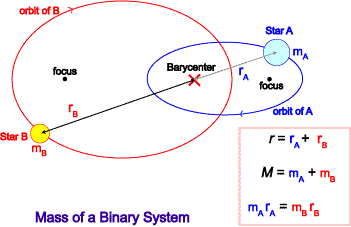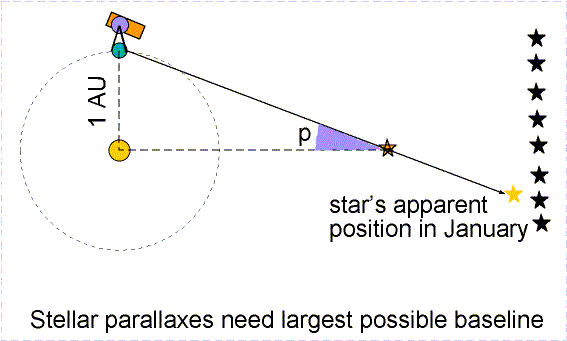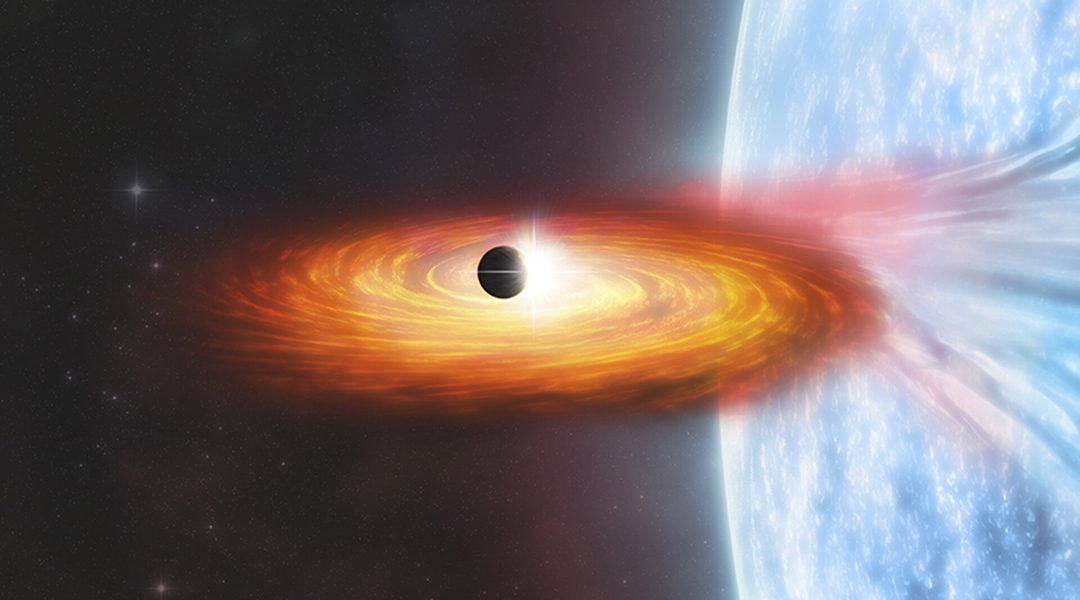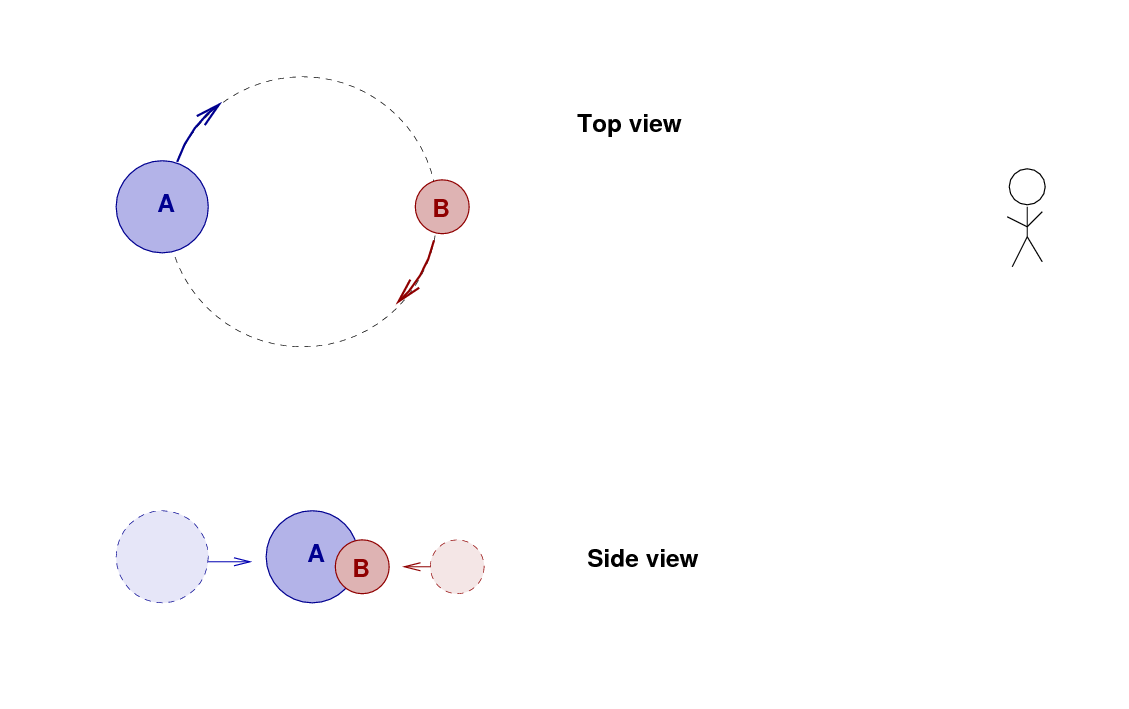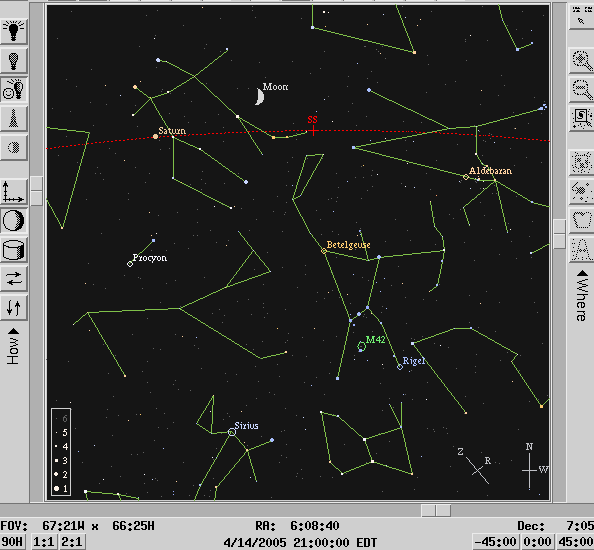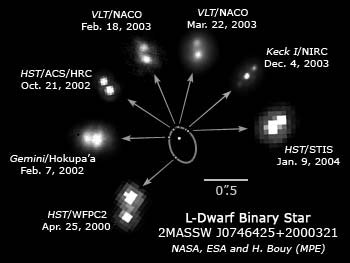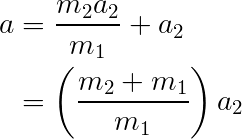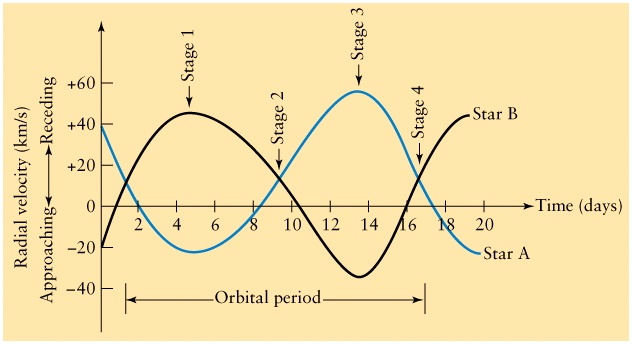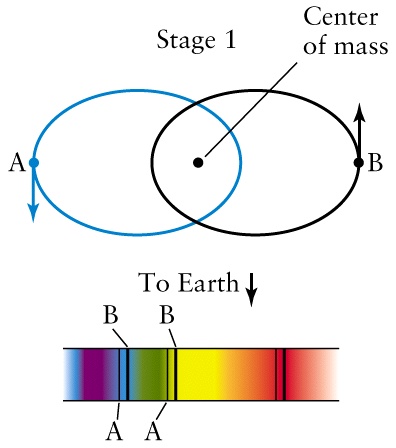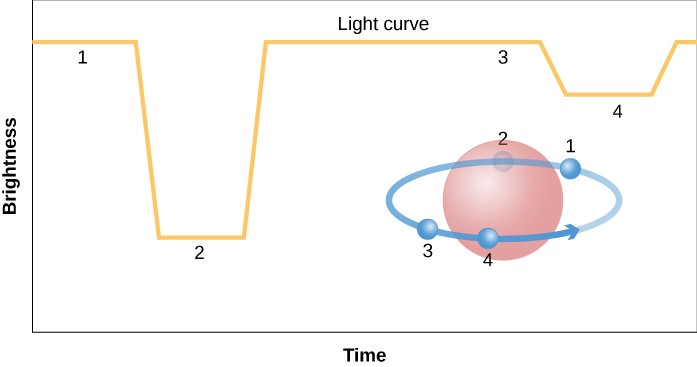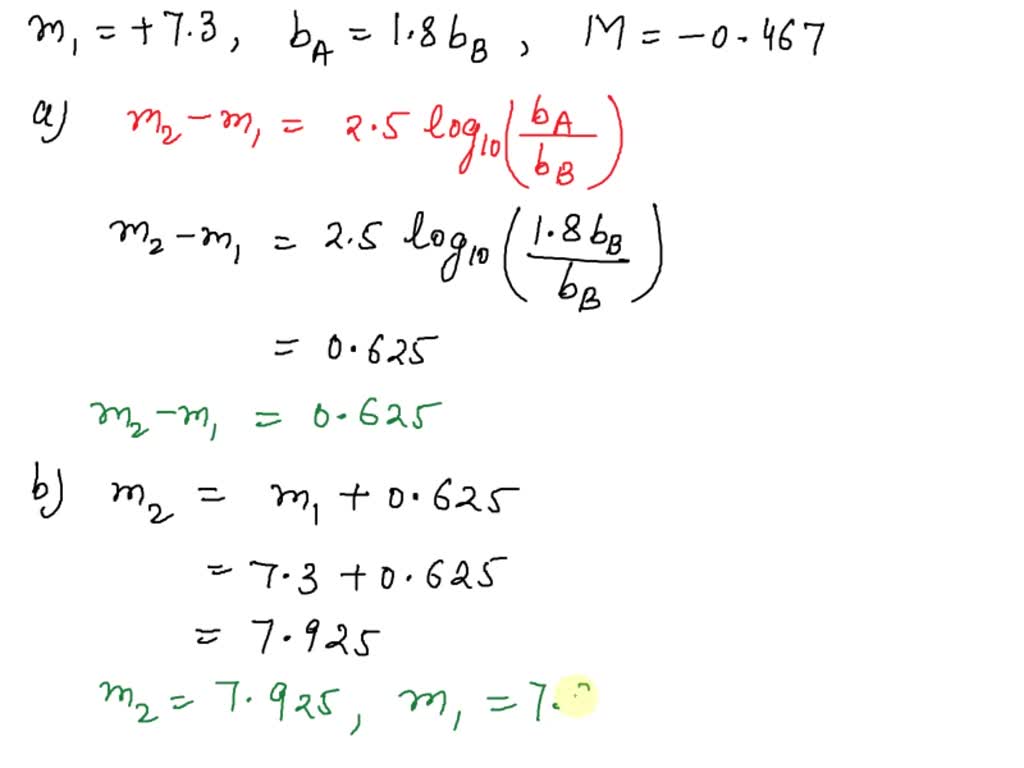
SOLVED: An unresolved binary star system is observed with a magnitude of +7.3. (a) Based on stellar models, astronomers estimate that star A is 1.8 times brighter than star B. What is

Physics Reference: A binary star consists of two stars A and B that orbit one another, as illustrated in Fig. 1.1.

A binary star consists of two stars A (mass 2.2Ms ) and B (mass 11Ms ), where Ms is the mass of the sun. They are separated by distance d and are

